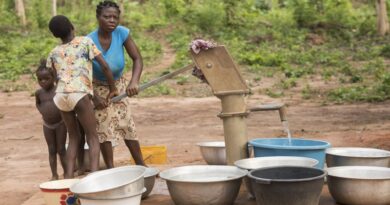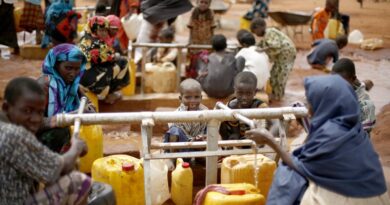Unicef issues record $6.4 bn emergency fund appeal to take on Covid, climate crises

Unicef, the UN agency responsible for providing humanitarian & developmental aid to children worldwide, has recently issued largest ever emergency funding appeal, seeking an unprecedented $6.4 billion to meet needs through 2021. The funds are needed to reach 300 million people, including more than 190 million children, with essential support and services through the end of 2021.
The amount sought is an increase of about 35 per cent more than requested for 2020 and reflects the rise in humanitarian needs and the funding gaps brought on by continued crises and the Covid-19 pandemic.
“When a devastating pandemic coincides with conflict, climate change, disaster and displacement, the consequences for children can be catastrophic,” said Unicef Executive Director Henrietta Fore.
“Today we are facing a child rights emergency in which Covid-19 and other crises are combining to deprive children of their health and wellbeing. This unprecedented situation demands a similarly unprecedented response. We are urging our donors to join us so that together we can help the world’s children get through this darkest of times and prevent a lost generation.”
Unicef’s humanitarian action for children establishes the agency’s plans to reach the following key populations, among others: 45 million people with access to safe water for drinking, cooking and personal hygiene; 6.3 million children with treatment for severe acute malnutrition; 27.4 million children with measles vaccinations; 93.3 million children with formal or non-formal education, including early learning.
Climate-related disasters have tripled in the past three decades, increasing water scarcity, threatening food security, forcing migrations, and increasing the risk of conflict and public health emergencies. UNICEF estimates that 36 million children are living in displacement due to conflict, violence and disaster. Malnutrition among children is on the rise globally.
The appeal will assist in new humanitarian crises that have erupted in Ethiopia and Mozambique as well as continue support efforts in Afghanistan, Bangladesh, Burkina Faso, the Democratic Republic of the Congo, Libya, South Sudan, Ukraine, Syria and Yemen.
In addition, powerful storms have devastated vulnerable communities in Central America and East Asia (namely the Philippines, Vietnam and Cambodia), affecting 2.6 million and 13.4 million children respectively.
The Covid-19 pandemic continues to wreak havoc on the lives of the most vulnerable. The pandemic has had a particularly devastating impact on the lives of children as routine immunization services have been disrupted in more than 60 countries. Nearly a quarter of a billion students worldwide are still affected by COVID-19 school closures. Globally, economic instability is disrupting essential services and making it harder for families to make ends meet and increasing the risk of domestic and gender-based violence.
The top five appeals by funding requirements for 2021 are for Syrian refugees ($1 billion), Yemen ($576.9 million), the Democratic Republic of Congo ($384.4 million), Syria ($330.8 million) and Venezuela ($201.8 million).
Recently, Unicef, along with the World Health Organization (WHO) had launched a report on global sanitation conditions and provided an assessment of investment required in order to achieve Sustainable Development Goal (SDG) 6.2 in the next 10 years.
The UN member states had committed in 2015 to achieve access to adequate and equitable sanitation and hygiene for all and end open defecation, paying special attention to the needs of women and girls and those in vulnerable situations, by 2030.
The WHO-Unicef report – State of the World’s Sanitation – has said the world is “alarmingly off-track” to deliver sanitation for all by 2030.
“Despite progress, over half the world’s population, 4.2 billion people, use sanitation services that leave human waste untreated, threatening human and environmental health. Of those, 673 million people have no toilets at all and practise open defecation. An estimated 367 million school-age children attend schools without toilets. More than 10 per cent of health care facilities have no sanitation service whatsoever. Only 32 per cent of forcibly displaced people have basic sanitation”.
The agencies present expectations with respect to childhood survival, health issues and nutrition in affected populations under “business as usual” and “significant investment“ scenarios, also assessing societal impacts such as food safety, climate change, work and recreation using similar assumptions.
The WHO acknowledges that achievement of universal access to safe sanitation will be expensive but that inaction is even more costly. “Lack of sanitation results in greater recurrent and preventable healthcare costs, lost income and educational opportunities, loss of productivity, and environmental pollution. Investments in sanitation – particularly safely-managed sanitation services – avert these costs and generate positive externalities across society.”
The benefit of investment is estimated to be about five times the cost. Estimates indicate that between 2017 and 2030, the annual cost to achieve universal sanitation would be approximately $105 billion. The total global average capital cost per beneficiary to gain access to safely managed sanitation is $24.



